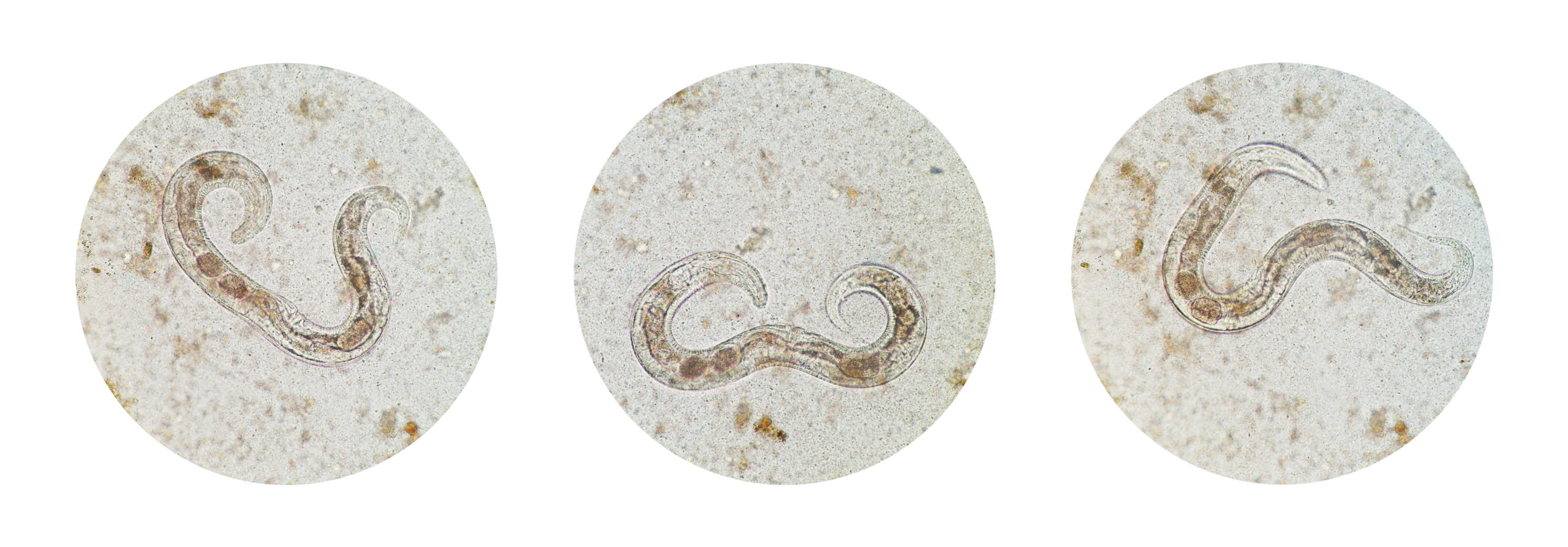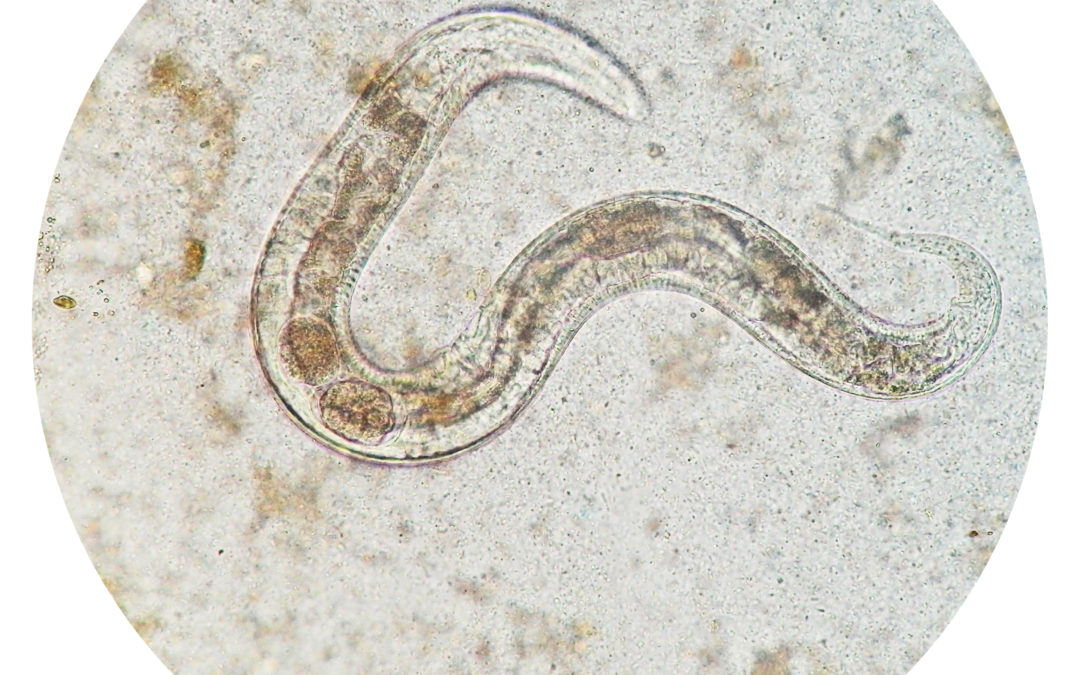Healthy soil supports a myriad of creatures and they in turn help support healthy soil. To name a few: nematodes, springtails, fungi, bacteria, algae, protozoa, mites and other larger organisms. Characteristics of healthy soil include space for air and water, a vibrant food web, and an amazing natural relationship among the components that is beneficial not only to plants but the broader environment! Let’s find out about one of these creatures: The nematode and its place in healthy soil.

The nematode is a roundworm. Those found in soil (generally in the top 6 inches) are mostly microscopic (less than 1 mm long). They are very prolific, with almost 100,000 species identified, so far. They are essentially aquatic, existing and moving within the moist spaces in the soil. (They are common in mosses, able to survive dry times and reactivate when the mosses recreate their aquatic environment). They have a simple anatomy – a non-muscular digestive system, hydro-skeleton (no bones!), and a primitive nervous system.
While nematodes have been known to have a “bad” reputation, the majority of species are beneficial to soil health and the environment. There are four major ways that they enhance soil quality. They:
- Help regulate populations of other soil organisms as predators in the food web
- Mineralize nutrients into plant available forms
- Provide a food source for other beneficial organisms
- Consume disease-causing organisms
Soil health depends a lot on balance and nematodes play a key role in keeping the balance. For example, they are essential to the nitrogen cycle. As nematodes consume bacteria and fungi, they obtain more ammonium (NH4+) than they need and release the excess in a form that plants can use. Their role in consuming disease-causing organisms has led to commercial use for this very purpose.
A few final fun facts: “Nematode” means thread-like in Greek. C. elegans, the common compost nematode, was the first organism to have its entire genome sequenced. Some nematodes survived the 2003 Columbia space shuttle disaster.

